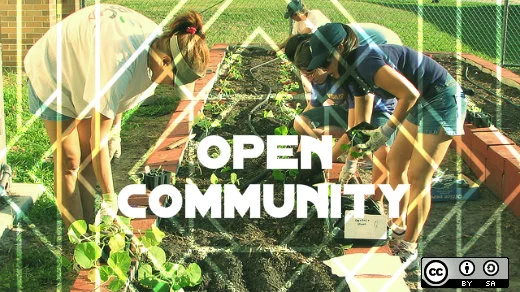Tips for volunteer retention in open communities, from a software project to a co-op grocery store.
You might not think of your grocery store as something that builds community, much less something that could be built in the open. But with the number of food co-ops increasing each year, grocery stores are increasingly becoming not just a social hub, but a catalyst for action in neighborhoods. After over a decade of building online communities around open source, I've learned some hard community lessons in the real world from food.
My journey with co-ops began last year. Clifton, a walkable and friendly area in uptown Cincinnati, lost its grocery store in January 2011. This was a family-owned grocery store that had served our neighborhood for generations. It was the economic anchor for our business district, and it was the keystone in the walkability of our neighborhood. It was a part of our culture.
For the next few years, all anybody talked about was whether the grocery store would open again. In barber shops and coffee houses and diners, all conversations eventually came back to the grocery store, the focal point of our community. A number of neighbors joined a private social network for the neighborhood, and the same conversations continued there. Somebody should talk to major chains. Somebody should open a co-op. Somebody should do something.
"Somebody should do something" isn't doing something
In August 2013, a concerned neighbor invited the neighborhood to her house to talk about what we could do together to bring our grocery store back. Sometimes it takes the smallest gesture to start a movement. From that initial meeting, a small group formed to explore different options. None of us started with a lifelong dream of opening a food co-op, but the more we looked at the problem, the more we knew that a co-op is the answer.
I was struck early on by the parallels between the growing co-op movement and the open source movement I'd been a part of for so long. Co-ops are people taking action, solving their own problems, and being self-reliant. Finding creative solutions to your own problems is a hallmark of open source. Co-ops abide by the Rochdale principles, a set of seven guidelines about fairness and cooperation. Everybody I met from co-ops across the country would share their ideas and methods, just as freely as I'd share my code.
We incorporated Clifton Market as a co-op in January 2014 and started selling shares in March. On the first day, nearly 100 of our neighbors became owners. People continued buying shares. We began various fundraising efforts, including owner loans and our recently launched Indiegogo campaign. Most importantly, we began bringing on enthusiastic new volunteers.
A community project lives and dies by its volunteers. Unless you can manage everything on your own, recruiting and retaining volunteers is your most important task, whether you're opening a grocery store or writing software. Volunteer retention is hard. People come and go, and that's perfectly normal. The best you can do is to slow the revolving door. Here are four tips I've learned from my year in the real world:
Know your cause
Different people will want different things. Some people want an all-organic natural food store. Some people want a low-price conventional grocery store. It's certainly important to listen to everybody's feedback, both for better community relations and to understand commercial viability. But you have to pick a mission and stick to it. Constant change of course will tire out your community.
Control toxicity
Every successful project will face criticism. It's easy to recognize the outright trolls, the people who sling mud just for the fun of it. What's far more difficult is dealing with the people who have genuine disagreements and constantly talk about it. The negative attitude and lack of appreciation will drag people down. Toxic environments destroy communities.
Unfortunately, you have to address people if they post in public. You cannot let misinformation spread unquestioned. But you have to choose every word very carefully to diffuse the emotion. It's easy to get into an escalating shouting match, and nobody feels good after those. Address factual points only. Never post angry. Angry posts just lead to more toxic environments.
Thank people
Show appreciation for their hard work. Do it often, and be genuine about it. One of the reasons that toxic environments drive people away is that people feel under-appreciated. Combat this with copious amounts of true gratitude. Saying "thank you" is a surprisingly powerful motivator.
Inform and empower your volunteers
It's easy to pawn off grunt work to volunteers, and sometimes that's the best way to get people started. But if you want to keep people on for the long haul, you have to bring them into the loop. You have to keep them informed, and you have to let them be a part of the decision-making process. When people make decisions, they feel more engaged. They develop a sense of ownership, and that keeps them involved.
You can't change the world by just talking about what should be done. The decisions are made by those that do. Be somebody. Do something.





2 Comments